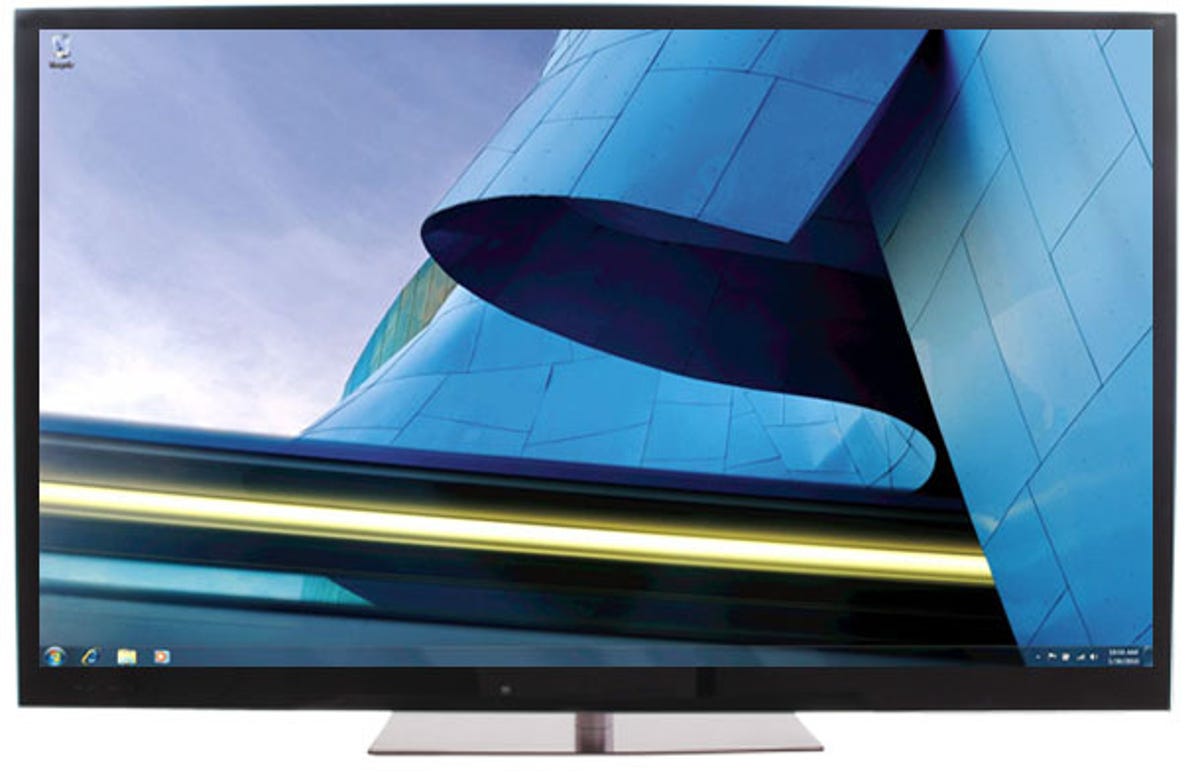
So you want to share photos, watch videos, or play computer games on the expansive screen of your HDTV? On one hand, this is a really simple how-to: use HDMI!
That, of course, isn’t the whole story. Not all computers, and not all TVs, can output or input a signal via HDMI easily. There are also a few tricks to consider.
The easy Many modern video cards have an HDMI output. This is the easiest way by far to connect a computer to a TV. I do this all the time, with my gaming home-theater PC running through my receiver to my projector. There are few things better in life than Battlefield 3 on a 102-inch screen in full surround sound. The newer video cards even output audio over HDMI, allowing single-cable hookup.
Slightly older video cards have DVI. This larger connector uses the same video transmission tech as HDMI, but lacks audio. So you’ll need audio cables to run from your PC to your receiver or TV. Some older TVs had DVI connectivity, so you can use that, too, obviously.
Any HDMI cable will work, and most new video cards come with an adapter to go from their Micro-HDMI output to a normal HDMI connector. These adapters are cheap if your computer didn’t come with one.
Still easy, less awesome If your computer doesn’t have HDMI or DVI, it will likely have VGA (RGB-PC) analog outputs. This is the old-school computer monitor connection, and honestly, you shouldn’t use it. It will work, but rarely does it look as good as HDMI or DVI. Fine details like text (on icons, especially) can blur, making it hard to read. Still, if VGA is all you’ve got, go for it.
The trick, of course, is finding a TV with RGB-PC inputs. If your TV doesn’t have them, you’re out of luck. Despite the component input having red, green, and blue connectors, you can’t easily convert RGB to component. There are a few converter boxes out there, but they’re not cheap. A simple cable or adapter won’t work, as the video itself is different.
Related stories
- LED LCD vs. plasma vs. LCD
- Why all HDMI cables are the same
- Why all HDMI cables are the same, part 2
- Is plasma HDTV burn-in a problem?
- Is LCD and LED LCD HDTV uniformity a problem?
- Geoff Morrison’s HDTV and home theater resource center and infotacular
Less easy There are numerous products available that use the USB connector to send computer video to your TV. This certainly works, but if you’re planning on using the PC for gaming, know that this method is sure to introduce lag. With first-person games, there will be a slight delay between your mouse input and what you see on screen. Personally, I find any lag unacceptable, but then I’m a pretty hard-core gamer.
It’s possible that the lag won’t be enough to distract if all you want to do is watch videos. And if you just want to show pictures, then any method will work.
Not all of these products work the same way. Read any user reviews carefully; in a quick scan of products available, I saw many users complaining of hard-to-read text, resolution problems, and other imperfections. Also make sure the product can handle a 1,920×1,080-pixel resolution.
Tips and tricks If you’re using HDMI, the computer and TV should communicate, automatically setting the computer’s resolution to 1,920×1,080 pixels (or whatever the native resolution of your TV is). There’s no point in outputting a higher resolution than your TV can handle. In fact, forcing your TV to down-convert a higher resolution will almost certainly result in unwanted artifacts.
If you’re not sure what your TV’s native resolution is, a simple Google search of the model number should tell you. If you bought the TV in the past few years, chances are it’s 1,920×1,080 pixels.
If you’re going analog with RGB-PC, dig out your TV’s owner’s manual (or find it online). Quite often, the RGB-PC input won’t accept a full 1,920×1,080-pixel resolution. Your video card will usually detect this, but better safe than sorry.
One last tip for gamers. Running modern games at 1080p is quite taxing for the entire system. If you’re suffering from choppy frame rates and stuttering, you should be able to reduce the resolution of the game. Again, check your owner’s manual for what resolutions are supported. Dropping down to 1,280×720 pixels will probably result in an overly soft image, but it’s always supported. Many TVs might support something in the middle, like 1,360×768 or 1,600×900 pixels. These lower resolutions may look fine, while allowing your video card some breathing room.
Given how much content most of us have on our computers, being forced to watch it all on a tiny screen seems needlessly constricting. Using a large TV screen as a monitor is easy, and–especially with gaming–truly awesome.
Related video


Now playing:
Watch this:
TV technologies that you’ll want next
3:23
Got a question for Geoff? First, check out all the other articles he’s written on topics like HDMI cables, LED LCD vs. plasma, Active vs Passive 3D, and more. Still have a question? Send him an e-mail! He won’t tell you what TV to buy, but he might use your letter in a future article. You can also send him a message on Twitter: @TechWriterGeoff.




